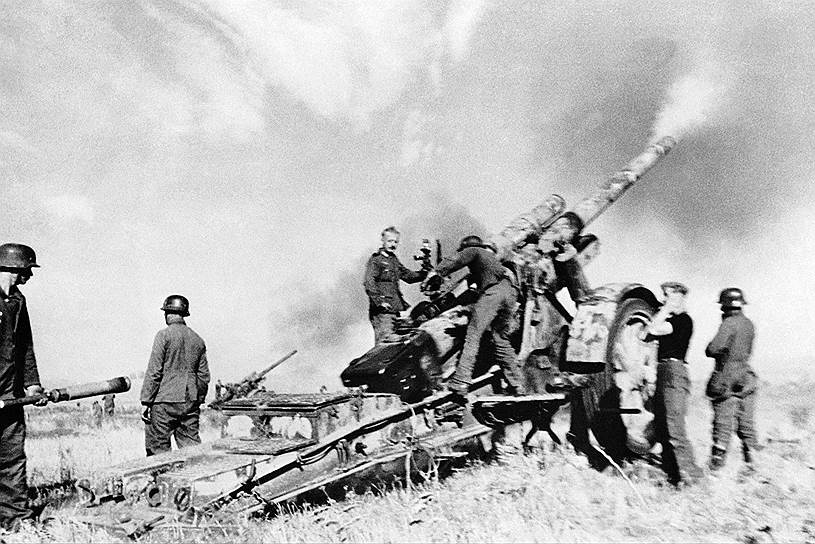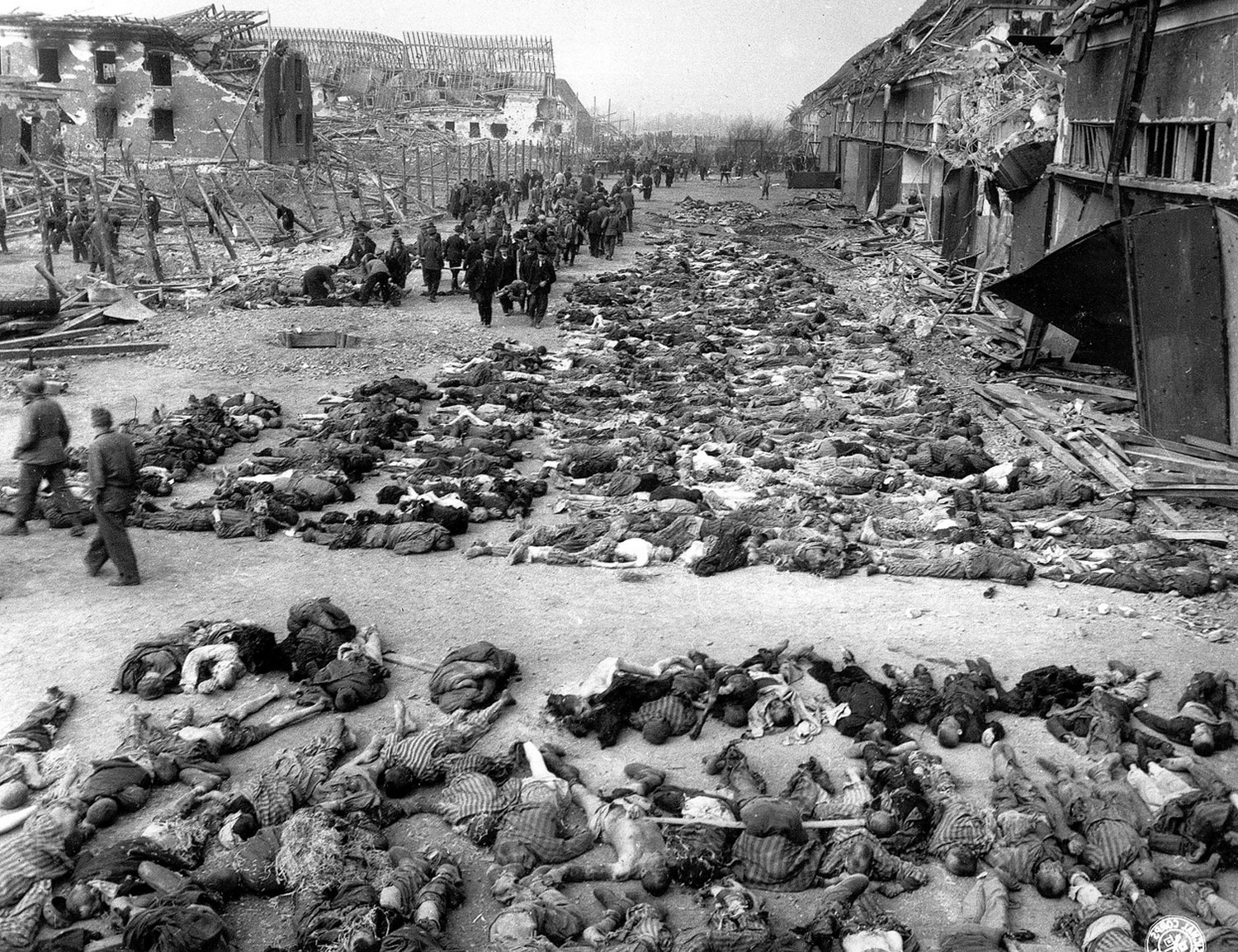Battle of Stalingrad. Forever ours
On February 2, 1943, the Battle of Stalingrad ended - difficult, bloody, one of the greatest in the history of mankind. It ended with the defeat of a huge group of German, Italian, Romanian, and Croatian troops and the complete triumph of the Red Army.
Subscribe to PolitNavigator news at Telegram,Facebook, Classmates or In contact with
It is impossible to overestimate the significance of the Battle of Stalingrad. The attention of the whole world was focused on the Soviet stronghold on the Volga for almost six months. If the Battle of Moscow was the end of Hitler’s “lightning war” plan, then the defeat of Germany in Stalingrad was the beginning of the end of Hitler’s entire Reich.
When it comes to how it happened that the Nazis reached the Volga, first of all the following should be taken into account:
Firstly, in the summer of 1942, the armed forces of Nazi Germany were at the peak of their combat effectiveness. If near Moscow the Red Army learned to beat and defeat the winter fascist, then no one in the world knew how to beat and defeat the summer fascist until the summer of 1943, when the Red Army crushed the best and best divisions of the Wehrmacht and SS.
Secondly, the German offensive in the summer of 1942 was due to a number of mistakes and miscalculations of the Soviet high command. However, if you know the background of the matter thoroughly, you will not dare to blame the country’s leadership for the summer disaster of 1942.
As you know, during the battle for Moscow, German troops were exhausted and bled white by the defenders of the capital, and during the Soviet counteroffensive they were thrown back 200 - 300 km. Instead of the cherished “blitzkrieg” with the victorious entry of German troops into the arc from the Barents to the Black Sea, Germany received a protracted war of attrition. To win the “Eastern Campaign,” Hitler urgently needed resources, and first of all, Grozny and Baku oil. The key to the oil resources of the Caucasus was Stalingrad - a large industrial and transport center connecting Central Russia with the North Caucasus.

For a number of reasons, the Supreme Command of the Red Army believed that in the summer of 1942 the Nazis would launch a second attack on Moscow. In addition, the main military task facing the Red Army from the beginning of the war was to wrest the initiative from the hands of the enemy at any cost. So that now he would have to rack his brains and figure out the direction of the main attack, to adapt to our plans, tormented by the unknown and receiving curses instead of laurels and orders from his beloved Fuhrer.
In May 1942, the Headquarters planned to conduct a summer offensive on the Barvenkovsky ledge near Kharkov. The offensive was unexpected for the Germans and almost became a disaster for Army Group South. But, as we remember, in the summer of 1942 the Germans surpassed our troops in numbers, maneuver and ability to fight. Using their numerical advantage and skillfully maneuvering motorized units, the Nazis managed to inflict powerful flank attacks on the troops of the Southwestern Front. The three-week battle, known as the “Second Battle of Kharkov,” ended in heavy defeat for the Red Army. During the battles near Kharkov, the Red Army lost almost 160 thousand people killed and seriously wounded. Almost 250 thousand Red Army soldiers were captured.
The Germans got Kharkov and the Kharkov economic region - almost a quarter of the Soviet pre-war heavy industry. A direct road to Rostov-on-Don, Krasnodar and the North Caucasus opened for the Nazis.
Without wasting any time, Hitler’s military leadership urgently adjusted the plans for the summer offensive and deployed colossal forces to attack the Caucasus: two army groups, “A” and “B”. Army Group A was to develop an offensive in the Caucasus, and Army Group B, reinforced by Paulus's 6th Army and Hoth's 4th Panzer Army, was to strike at Stalingrad.
On July 12, when the Nazis' intentions became obvious, the Headquarters created the Stalingrad Front, the first commander of which was Marshal Timoshenko, and less than two weeks later - General Gordov.
The newly created front had to fight in hellish conditions. Most of the units and formations of the front had no combat experience, the troops experienced an acute shortage of ammunition and vehicles, anti-tank artillery, anti-aircraft guns and fighter aircraft. However, the troops of the Stalingrad Front offered fierce resistance, which forced the Nazi command to strengthen the 6th Army.
It is enough to look at the balance of power on July 22, 1942, to understand what a huge and selected force our grandfathers stopped and defeated in Stalingrad:

By July 22, the 6th Army of the Wehrmacht had 18 divisions, numbering 250 thousand combat personnel, about 740 tanks, 7500 guns and mortars. The troops of the 6th Army supported up to 1200 aircraft. As a result, the balance of forces increased even more in favor of the enemy. For example, in tanks he now had a twofold superiority. By July 22, the troops of the Stalingrad Front had 16 divisions (187 thousand people, 360 tanks, 7900 guns and mortars, about 340 aircraft).
At the end of July, the situation at the front became critical: Soviet troops were driven out by the enemy beyond the Don and there were no longer any serious obstacles to the motorized Wehrmacht troops on the way to the Volga.
On July 28, 1942, Stalin addressed the Red Army troops with order No. 227, also known as “Not a step back!”
The order provided for the harshest measures against those servicemen who showed cowardice and cowardice in battle, who left their positions without orders.

The fan club “if you had given up in time, you would have drunk Bavarian” is very fond of debating around Order No. 227. Like, this is wrong, inhumane. But from front-line soldiers who fought since the summer of 1941, we repeatedly heard that the order “Not a step back!” should have been introduced back in 1941.
No matter what the “Bavarian lovers” were saying, Order No. 227 took effect almost instantly. At the beginning of August 1942, the stubborn resistance of the troops of the Stalingrad Front in the big bend of the Don thwarted the German plan to break through to Stalingrad with a swift blow.
But the Nazis’ advantage in manpower, tanks and aircraft did their job: their troops, with huge losses, were slowly approaching the city. On August 23, 1942, Stalingrad was subjected to massive bombing by German aircraft. The pearl of the Volga region, a large beautiful city, overnight turned into flaming ruins. On this day, more than 40 thousand civilians died in Stalingrad - Stalingrad residents and refugees who arrived in the city.
By committing a monstrous crime against humanity, the Nazis also did themselves a disservice. In the conditions of rubble and ruins, their numerical advantage in manpower and equipment was no longer decisive. The war inside Stalingrad turned from a “war of engines” into a completely different war, when in close combat the one who had stronger nerves, a stronger desire to kill the enemy, who was two-wire and even three-wire, won. The specifics of the battles in the ruins of Stalingrad are battles in three dimensions, when the floors of one building are interlayered by soldiers of the opposing sides, this is a sniper hunt, the tactics of assault groups on a squad scale and battles that turn into brutal hand-to-hand combat.

Another important question: how did you resist, how did you win? The German historian Hans Doerr (like all German historiography) believes that the Battle of Stalingrad was lost due to the vicious planning of General Paulus, who believed that with two simultaneous strikes his army could capture Stalingrad. Now, if he had moved around the city with one fist, then everything could have turned out differently.
In fact, the main miscalculation of the Nazis lies much deeper: the war against the Soviet Union itself was vicious and criminal, underestimating its economic power, the resilience and patriotism of the Soviet people. It is also important that, as at Moscow, the defeat of the Nazis at the walls of Stalingrad was inflicted by units of the Red Army that did not have numerical superiority over the enemy.
And for some reason it doesn’t sound like the Germans in the decisive battle on the Volga relied on their not-so-strong allies – the Romanians and Italians in the first place, which the Soviet commanders were quick to take advantage of when planning the operation to defeat the Germans and their allies at Stalingrad.

The Battle of Stalingrad shook the Third Reich to its core and made a huge impression on other states. The Soviet command did not expect that almost 130 thousand Germans, Romanians, Italians, and Croats would be captured. Photographs of fields covered with the numb corpses of “supermans”, surrendering into captivity of “Nibelungs” exhausted from cold and hunger in ersatz boots made of straw and car tires, spread all over the world. It is no wonder that there were great sanitary losses among the captured fascists: medical workers of the Red Army, during sanitation, removed 200 grams of lice from the carcass of each captured fascist.

The losses on both sides were enormous. According to modern data, the total irreparable losses of the USSR and Germany and their allies were approximately equal and amounted to more than a million people on each side. The Red Army lost almost 1113 thousand people killed and mutilated in the Battle of Stalingrad. Average daily losses – 5117 people. Based on the OSH of the Red Army rifle division from August 1941, every two days of fighting during the six months of the Battle of Stalingrad, the Red Army lost the division killed and wounded.
But the consequences of defeat for the Nazis were much more severe. They lost almost a quarter of their troops on the Eastern Front, and in equipment they lost equipment equivalent to 45 divisions. According to the head of the economic department of the OKW (General Staff of the Armed Forces of the Third Reich), General Georg Thomas, the Stalingrad losses of the tank and automobile industry amounted to six months of Reich production, artillery - three months, small arms and mortars - two months.
In the operation alone to supply the encircled Stalingrad group of Paulus, Luftwaffe losses amounted to 488 aircraft and more than 1000 pilots. This is not counting the 300 aircraft that were destroyed on the ground by tankers from the V.M. Corps. Badanov, who broke through to the German airfield in Tatsinskaya at the end of December 1942.
After Stalingrad, the morale of the German troops and their allies was broken. Potential aggressors Turkey and Japan no longer harbored plans to enter the war against the USSR, and those who got involved in the war began to think about how to get out of it in time with the least losses.
In Germany, mourning was declared for the defeated 6th Army.

A strong demoralizing factor for the enemy was the surrender of Field Marshal Paulus, from whom Hitler had never expected such an act. While in captivity, Paulus joined the anti-fascist committee “Free Germany”, and three years later he would appear at the Nuremberg Tribunal as a prosecution witness against the Nazi leadership and the criminal plan for the war against the USSR “Barbarossa”.
The victory of the Red Army inspired hope both in the allies of the USSR and in the population of the Nazi-occupied Soviet territories and other countries. The English King George V donated an honorary sword to Stalingrad as a sign of deep respect from the people of Great Britain. US President Roosevelt's gift to Stalingrad was more modest - a certificate of honor, but the organization of trade unions in New York alone raised 250 thousand dollars (a huge amount at that time) for the construction of hospitals in Stalingrad.
Streets in various cities around the world were named after Stalingrad. In Paris, for example, the Stalingrad metro station still exists. Symbolic gratitude of the Parisians for the fact that the 100th, 113th, 295th divisions of the Wehrmacht, which were the first to invade Paris in June 1940, completely disappeared in the Battle of Stalingrad.

For us, the descendants of the defenders of Stalingrad, the memory remains. The medal “For the Defense of Stalingrad” on my grandfather’s jacket, the hero city of Volgograd, the stunning memorial on Mamayev Kurgan, as well as the Immortal Front of heroes of the Battle of the Volga, including generals Chuikov and Rodimtsev, sniper Vasily Zaitsev, Sergeant Pavlov with soldiers, and militiamen who are forever in service and the workers of the Stalingrad Tractor Plant, stalwart policemen and firefighters from the 10th NKVD Division, marines from Sevastopol who attacked the Nazis singing “The Internationale” through the flames of a burning oil depot on the outskirts of the city, living and dead civilians of Stalingrad. Our. Forever.
If you find an error, please select a piece of text and press Ctrl + Enter.



Thank you!
Now the editors are aware.